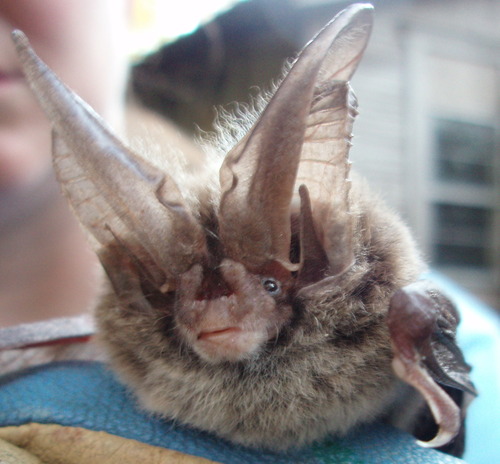
Rafinesque's big-eared bat
Rafinesque's big-eared bat (*Corynorhinus rafinesquii*) is a unique bat species found in the southeastern United States, known for its remarkably large ears, which are nearly half the length of its body. These bats play an important ecological role as insectivores, helping to control insect populations. While not as widely recognized as some other bat species, they hold a significant place in their ecosystems and have some cultural significance due to their distinctive appearance.
7.5-10 cm
Length
25-30 cm
Wingspan
Least Concern
Conservation Status
Distribution
Southeastern United States, from Florida to eastern Texas and north to Indiana and Kentucky. They are non-migratory, generally staying within the same region year-round.
Lifespan
Up to 10 years in the wild.
Rafinesque's big-eared bat's Habitat
Habitat Types
Mature forests, Bottomland hardwood forests, Caves, Abandoned buildings, Bridges
Climate Zones
Temperate, Subtropical
Adaptations
Their large ears are adapted for precise echolocation, allowing them to navigate and hunt in cluttered forest environments. They are also adapted to roost in a variety of structures, providing flexibility in habitat selection.
Variations
Two subspecies are recognized: *C. r. rafinesquii* in the eastern part of the range and *C. r. macrotis* in the western part. Subtle differences in size and coloration may exist.
Appearance
Breeding Plumage
No significant difference between breeding and non-breeding seasons.
Seasonal Feather Changes
No significant seasonal changes.
Sex Based Plumage Differences
Minimal to none.
Notable Features
Extremely large ears, almost half the body length., Two prominent glandular lumps on the snout., Long, soft, grayish-brown fur on the back and lighter fur on the belly.
Diet and Feeding
Primary Foods
Moths, Beetles, Flies, Other small insects
Foraging Behavior
They are gleaners, meaning they often pick insects off surfaces like leaves and tree bark, rather than catching them in mid-air. They use their large ears and echolocation to find prey in cluttered environments.
Specializations
Their large ears and maneuverable flight allow them to hunt effectively in dense vegetation.
Seasonal Diet Variations
Diet may vary slightly depending on the seasonal availability of different insect types, but moths generally remain a staple.
Behavior
Social Structure
Form colonies, especially during maternity season. Outside of breeding season, they may roost solitarily or in small groups.
Communication
Echolocation calls for navigation and hunting., Social calls within roosts, likely for communication between individuals.
Migration
Non-migratory; they are year-round residents within their range.
Territorial or Group Behaviors
May exhibit some territoriality around roosting sites, but generally not highly aggressive.
Conservation
Threats
Habitat loss and fragmentation (loss of mature forests), Disturbance of roosting sites (caves, abandoned buildings), Pesticide use (reducing insect prey)
Protection Programs
Cave protection and management., Forest conservation initiatives.
Local National Laws
Protected under various state and federal laws in the US, including the Endangered Species Act in some states.
Population Trend
Stable, but with localized declines in some areas.
Population Estimates
Difficult to estimate precisely due to their cryptic nature, but considered relatively uncommon.
Interesting Facts
They can curl their long ears back against their head when at rest.
This likely helps protect their delicate ears while roosting.
They are one of the few bat species that primarily gleans insects.
This foraging strategy allows them to exploit a different niche than aerial-hawking bats.
Females exhibit delayed fertilization
Sperm is stored over the winter with ovulation and fertilization in the spring.
Faqs about Rafinesque's big-eared bat
Are Rafinesque's big-eared bats dangerous to humans?
No, they are not aggressive and pose no direct threat to humans. Like all wild animals, they should not be handled.
Do they carry rabies?
Like all mammals, they can carry rabies, but the incidence is very low. It's best to avoid contact with any wild bat.
What should I do if I find one in my house?
If a bat is found inside a building, the best action is to open a window or door and allow it to fly out on its own. Avoid direct contact. If it does not leave, consult professional.
Copyright @ Nature Style Limited. All Rights Reserved.
 English
English